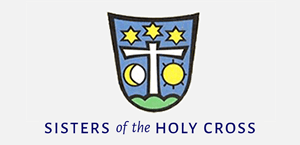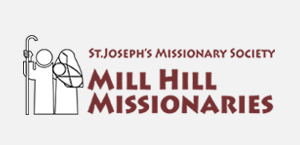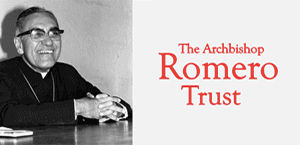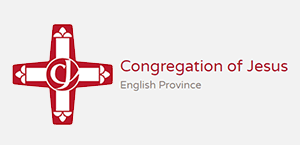Gospel in Art: Monday of Holy Week - Mary anoints the feet of Jesus
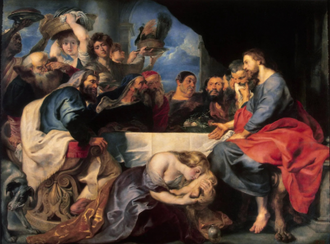
The Anointing at Bethany, by Peter Paul Rubens and Anthony Van Dyck. 1618 © The State Hermitage Museum, St Petersburg
Source: Christian Art
Gospel of 3 April 2023
John 12:1-11
Six days before the Passover, Jesus went to Bethany, where Lazarus was, whom he had raised from the dead. They gave a dinner for him there; Martha waited on them and Lazarus was among those at table. Mary brought in a pound of very costly ointment, pure nard, and with it anointed the feet of Jesus, wiping them with her hair; the house was full of the scent of the ointment.
Then Judas Iscariot - one of his disciples, the man who was to betray him - said, 'Why wasn't this ointment sold for three hundred denarii, and the money given to the poor?' He said this, not because he cared about the poor, but because he was a thief; he was in charge of the common fund and used to help himself to the contributions. So Jesus said, 'Leave her alone; she had to keep this scent for the day of my burial. You have the poor with you always, you will not always have me.'
Meanwhile a large number of Jews heard that he was there and came not only on account of Jesus but also to see Lazarus whom he had raised from the dead. Then the chief priests decided to kill Lazarus as well, since it was on his account that many of the Jews were leaving them and believing in Jesus.
Reflection on the painting
In today's gospel reading, Mary, the sister of Lazarus, lovingly anoints the feet of Jesus. In a few days' time, Jesus will wash the feet of his disciples. Mary at the service of Jesus, foretells the way that Jesus will serve his disciples at the Last Supper.
Mary received something hugely precious from Jesus: the gift of life for her beloved brother Lazarus whom Jesus brought back from the dead. She now wanted to give something hugely precious back to the Lord. Her gift was precious also in financial terms. Judas declares that it was worth three hundred denarii, which was a vast sum of money at that time. No expense was spared. Jesus appreciated Mary's gift not so much for its financial value, but because of its timely quality. Jesus was just about to enter into his passion and death, and Mary anointed Jesus to strengthen him for this ordeal that lay ahead. Looking forward to my own ordination to the priesthood in June, I read today's gospel in that deeper context. The oils the Bishop uses for the ordination are also there to strengthen the newly ordained priest for the journey ahead.
Following on from yesterday's painting by Van Dyck, today we see a collaboration between master (Rubens) and pupil (Van Dyck). Rubens conceives the painting as a dramatic conflict between the Pharisees and Christ. The Pharisees' world of material values and uncompassionate religious views is opposed to the Christian world of virtue, noble acts, a world of sympathy, charity and goodness. The disciples, taking in the words of their teacher, are portrayed with completely contrasting expressions to those of the Pharisees, on whose faces we can read a lack of comprehension, annoyance and even anger. But it is Mary, who takes center stage in our painting. Our eyes are drawn towards her. Mary is at Jesus' feet with the jar of ointment. On the right side of Christ, we see her brother, Lazarus. Judas (with some Pharisees behind him) is sitting to the left of our composition. He is already painted with a traitor-like expression, questioning Jesus about the cost of the ointment…
LINKS
Gospel in Art: https://christian.art/
Today's reflection: https://christian.art/daily-gospel-reading/john-12-1-11-2023/









